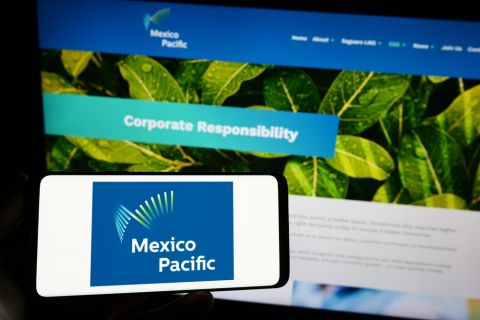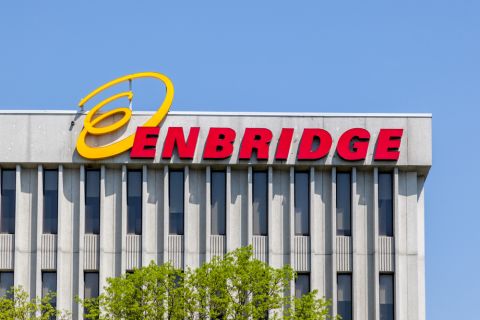Jordan Blum, editorial director, Hart Energy: We're here at NAPE in downtown Houston. I'm joined by Chris Powers, the vice president of CCUS (carbon capture utilization and storage) for Chevron New Energies. Thank you so much for joining us. Just to start out, we're talking about how CCUS is almost the opposite of oil and gas E&P where you are looking at a bit of a different geology.
Chris Powers, vice president of CCUS, Chevron New Energies: Thank you for being here and thank you for the opportunity to share a little bit more about insights around CCUS. Great discussion earlier, and I'm happy to be here. It's interesting, there are so many parallels to the oil and gas industry, the skill sets and the capabilities that you need. But one of the things we talk about is when you get to the fundamental geology and what you're looking for in terms of reservoirs, you're looking for both either depleted oil and gas formations or saline aquifers, but one of the things that is a bit of the flip or different, is if you're thinking about looking for a traditional oil and gas accumulation, it might be up against a salt dome or at a structural high like an anti-cline. Here we're looking for a syncline or a structural low with low dip, and that's actually the ideal place to inject CO2 into sort of the bottom of a formation where you will accumulate the CO2 over time. So in many ways, it is the same sands, it might be thick sandstones, thick myosin sands that might in one area geographically hold hydrocarbons, but then as you move hundreds of miles away, it might be at a low and be a perfect spot to inject CO2.
JB: Can I get you to give a little bit of an overview of Chevron on CCS? I mean, you are everywhere from Australia to now southern Louisiana, united by the love of shrimp, and now CCS.
CP: Absolutely. So we have a global footprint within Chevron New Energies. It is a real high level with four big business lines. We have carbon capture utilization and storage, hydrogen, offsets and emerging, that includes geothermal and then renewable fuels. So drilling down within CCUS, we're active around the globe. As you mentioned, the portfolio spans from Asia Pacific. We're active in Australia, that's probably our biggest area, but looking throughout the Asia Pacific region, we've had some announcements sent around Indonesia, other areas of Southeast Asia, and then you move over into the U.S., which is really interesting right now when you have the mix of the geology, the emissions and then the enabling frameworks, the policy frameworks to really get these businesses to move forward. So within the U.S., California, and then moving to the U.S. Gulf Coast, we have our signature project, Bayou Bend, which is between Houston and Beaumont, Port Arthur, the Golden Triangle, but then also looking at other areas across the Texas, Louisiana, Mississippi, Gulf Coast. We think these areas are going to be very prospective for CCUS growth over time.
JB: Very good. You mentioned Bayou Bend, which is interesting. I think it's a combination of onshore and offshore in the Gulf of Mexico. I wanted to see if you could compare and contrast, the potential and challenges between both onshore versus offshore.
CP: Yeah, it's interesting. When we looked at our portfolio, there are puts and takes with each of the different approaches. Bayou Bend became an onshore and offshore position just as the asset was developed and grown over time. Of course, Talos and Carbonvert made the first acquisition, the first lease of the offshore position, we farmed into that and then we were building an onshore position in the West Jefferson, east Chambers County area. We consolidated those and we took over as operator about one year ago now. And it's interesting, there is different benefits and different challenges with each area. You think about an offshore position, maybe a couple of quick examples I'll give. The offshore lease is from the Texas General Land Office (GLO) and it's very simple: Single landowner and it's very clear that you have a sequestration only lease.
There are no minerals that you need to worry about that GLO made that clear in the terms of the lease. You're not having to worry about competing for minerals plays, et cetera. So it's very clean and clear. Of course, the con of that is development costs might typically be a little bit higher. You're going to have to put a well hut platform, you're going to have to put a pipeline potentially a little bit further from emissions. You contrast that with the onshore where it's nicer because generally development costs you'd think would be lower in an onshore position, you might be more proximate to the emissions. But the challenge is many different landowners. You have to be very thoughtful and methodical about building the position, and you've not only got the surface owner, which owns the estate that the pore space is governed by, but you also have the mineral estate.
As I mentioned earlier, in these areas we have been focusing on there's typically not as much of a mineral play or a hydrocarbon play, so that's less of an issue, but theoretically, there is two estates to deal with in an area that might have hydrocarbon. So puts and takes of each one, we're taking sort of a diversified approach as we engage the emitters or the customers so that we can meet them where they're at and deliver the solution they're looking for.
JB: Very good. Obviously there's been a good bit of funds flowing from the IRA for these types of projects, but then you get the Class VI permitting process, which is a lot slower. Can I get your opinion on just the optimism and the challenges involved?
CP: The classics permits, for those who aren't aware, are the permits that you need to permanently inject and sequester the CO2. We're optimistic that if you go back to, and I'll switch to policy more broadly, when we put the IRA in place a few years ago. It's sort of going through its paces of seeing how it is going to be actually implemented and operationalized. But then you think about how we're going to tackle everything else that comes with it. The classics permit is a key piece. Primacy is a big topic right now, and several states have primacy, Wyoming, North Dakota and Louisiana was just recently awarded primacy. A key thing to make sure everybody is aware of is the framework and the rigor is the same in the classics permit application, regardless of if a state has primacy or if the EPA has primacy at the federal government level for the other 47 states that don't have primacy.
So what I'm optimistic about is that as more states submit for and hopefully achieve primacy over time, you'd expect Texas to submit and several others. You're just going to have a bigger pool of people that are used to dealing with subsurface permits and can get into more of a factory process where they've learned, they know the things to look for in the permits. They know what looks good and what doesn't look good, so I think the end result will end up with more people being able to process more Class VI permits with a higher quality and with a higher efficiency over time as the states develop and achieve primacy over time.
JB: I know a lot of question marks remain, but I'll ask anyway. How do you see the timeline playing out from there?
CP: It has varied a good bit. Louisiana, again, just recently achieved primacy. We've heard people say it could be months, could be a couple of years. I think it all depends on the quality of the application that's submitted to the EPA for primacy, and I believe that the states who are thinking about applying, they're taking the lessons learned from the states that have primacy now, and hopefully applying that to their application to make the process move seamlessly.
JB: And any more updates on the status of Bayou Bend specifically now that Louisiana does have primacy?
CP: Bayou Bend, if you think about our areas, Texas Coastal waters just south of Sabine Pass, we are on the Texas side of the state line. The onshore piece is progressing very well. We have a strat well drilling in the Gulf of Mexico right now in the offshore position. We'll be drilling an onshore strat well here in the next month, and so we will continue to take that data, add it to our subsurface models, and then progress through the process in the months ahead.
JB: Very good. Well, again, thank you so much for joining us here at NAPE. To read and watch more, please visit online at hartenergy.com.
Recommended Reading
BP Pursues ‘25-by-‘25’ Target to Amp Up LNG Production
2024-02-15 - BP wants to boost its LNG portfolio to 25 mtpa by 2025 under a plan dubbed “25-by-25,” upping its portfolio by 9% compared to 2023, CEO Murray Auchincloss said during the company’s webcast with analysts.
Mitsubishi Makes Investment in MidOcean Energy LNG
2024-04-02 - MidOcean said Mitsubishi’s investment will help push a competitive long-term LNG growth platform for the company.
Tellurian, Institution Investor Agree to New Loan Repayment Terms
2024-02-22 - Tellurian reached an agreement with an unnamed institutional investor to pledge its interest in the Driftwood project as collateral.
Mexico Pacific Appoints New CEO Bairstow
2024-04-15 - Sarah Bairstow joined Mexico Pacific Ltd. in 2019 and is assuming the CEO role following Ivan Van der Walt’s resignation.
Enbridge Advances Expansion of Permian’s Gray Oak Pipeline
2024-02-13 - In its fourth-quarter earnings call, Enbridge also said the Mainline pipeline system tolling agreement is awaiting regulatory approval from a Canadian regulatory agency.




